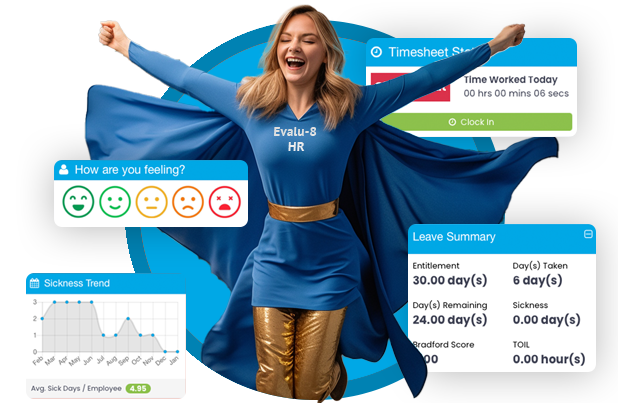Wellbeing is a crucial element that directly impacts various aspects of HR management. From creating a positive work environment to enhancing employee performance, wellbeing plays a significant role in shaping the human resources function. In this article, we will explore the concept of wellbeing, its importance in the workplace, and how HR can promote and benefit from it.
Additionally, we will delve into the challenges that organisations may face when implementing wellbeing initiatives.
The 5 elements of Wellbeing
When we talk about wellbeing, it encompasses various dimensions, such as physical health, emotional intelligence, social connections, work-life balance, and personal fulfilment. It is not limited to a single aspect but rather a culmination of several factors that contribute to an individual’s overall wellbeing. By considering these various dimensions, organisations can create an environment that promotes the highest level of employee wellbeing.
Physical health is an essential component of wellbeing. It involves maintaining a healthy lifestyle through regular exercise, proper nutrition, and adequate rest. When employees prioritise their physical health, they experience increased energy levels, improved focus, and reduced risk of chronic diseases. Organizations can support physical wellbeing by offering wellness programs, gym memberships, and flexible work schedules that allow for regular exercise and self-care.
Emotional intelligence plays a crucial role in wellbeing. It refers to the ability to recognise, understand, and manage one’s emotions effectively. Employees with high emotional intelligence are better equipped to handle stress, build positive relationships, and navigate conflicts. Organizations can promote emotional wellbeing by providing training programs that enhance emotional intelligence skills, fostering a supportive and inclusive work environment, and offering counseling services to employees who may need additional support.
Social connections are another vital aspect of wellbeing. Humans are social beings, and having strong relationships and social support systems positively impact mental and emotional health. Organizations can encourage social connections by organising team-building activities, creating opportunities for collaboration and networking, and fostering a sense of community within the workplace.
Work-life balance is crucial for overall wellbeing. It involves effectively managing the demands of work and personal life, allowing individuals to dedicate time and energy to both areas without feeling overwhelmed or burnt out. Organizations can support work-life balance by implementing flexible work arrangements, promoting time management skills, and encouraging employees to take regular breaks and vacations to recharge and rejuvenate.
Personal fulfilment is the sense of satisfaction and accomplishment that individuals derive from their work and personal pursuits. It involves aligning one’s values, passions, and strengths with their chosen career and personal goals. Organizations can foster personal fulfilment by providing opportunities for growth and development, recognizing and rewarding employees’ achievements, and promoting a culture of continuous learning and self-improvement.
The Role of HR in Promoting Wellbeing
HR professionals play a vital role in promoting employee wellbeing within organisations. They are responsible for creating and implementing strategies that foster a supportive culture and provide resources that enhance employee wellbeing. Let’s explore the specific responsibilities HR has in promoting employee wellbeing and some effective strategies they can employ.
HR’s Responsibility in Employee Wellbeing
One of HR’s primary responsibilities is to ensure the physical and mental health of employees. This involves developing comprehensive wellness programs, providing access to healthcare resources, and offering support services such as counseling or stress management programs. Moreover, HR should foster a culture that encourages open communication and promotes work-life balance.
Strategies for HR to Improve Employee Wellbeing
HR professionals can leverage various strategies to improve employee wellbeing. These include offering flexible work arrangements, organizing training and development programs, promoting a healthy work-life balance, and encouraging regular breaks. Additionally, HR can implement initiatives such as mindfulness training, wellness challenges, and fitness programs to enhance overall employee wellbeing within the organization.
The Impact of Wellbeing on HR Functions
Employee wellbeing has a significant impact on various HR functions, ultimately shaping the success of the organization. Let’s explore two key areas where wellbeing influences HR functions.
Effects on Recruitment and Retention
Organizations that prioritise employee wellbeing have a competitive advantage when it comes to attracting and retaining top talent. Potential employees are more likely to be drawn to organisations that prioritize employee wellbeing, as they understand the importance of their overall satisfaction and happiness. Furthermore, employees who feel supported and valued are more likely to remain committed to an organization, reducing turnover rates and associated recruitment costs.
Influence on Employee Performance and Productivity
Employee wellbeing has a direct correlation with performance and productivity levels. When employees feel physically, mentally, and emotionally well, they are more likely to be engaged in their work and motivated to perform at their best. Investing in wellbeing initiatives leads to reduced stress levels, higher levels of job satisfaction, and increased focus and creativity, ultimately driving overall productivity in the workplace.
Challenges in Implementing Wellbeing Programs
While wellbeing initiatives yield numerous benefits, organizations often face challenges in their implementation. Let’s discuss some common obstacles that HR professionals may encounter during the process.
Common Obstacles in Promoting Wellbeing
Resistance to change, budgetary constraints, lack of awareness, and competing priorities are common obstacles faced during the implementation of wellbeing programs. Additionally, engrained work culture and skeptical attitudes towards prioritizing employee wellbeing may hamper the success of such initiatives.
Solutions to Overcome Wellbeing Challenges
Overcoming wellbeing challenges requires a proactive approach. HR professionals can educate stakeholders on the benefits of wellbeing initiatives, conduct surveys to gauge employee needs, and create a phased implementation plan that addresses budgetary constraints. Additionally, fostering leadership support and emphasizing the positive impact on organizational performance can encourage buy-in from employees and stakeholders alike.
Conclusion
In conclusion, employee wellbeing has a profound effect on HR functions. By understanding the concept of wellbeing, recognizing its importance in the workplace, and taking proactive measures, HR professionals can create a positive work environment that supports employee physical and mental health. The impact of wellbeing on recruitment, retention, performance, and productivity cannot be understated. While challenges may arise, overcoming them through thoughtful planning and strategic implementation is key to reap the numerous benefits of prioritizing employee wellbeing in HR.
See the quick demo now
Before we show you the quick demo, we need to make sure you are a real person.

More from the HR Blog



